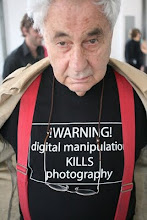
The independent Photobook
The second Kasseler Photobook-Festival
The second Kasseler Photobook-Festival
From the wish to the book. how does a photographic work become a photobook? Is a photobook without compromises possible? Which avenues towards the photobook are currently possible? For a few years now software, internet and digital print have opened completely new perspectives: small and even smaller editions, print on demand, flexible production.
What are the compromises that concept, creation and production demand and how do in-house productions reach their buyers? of what significance are virtual internet photobooks? How do established publishers respond to these challenges and which criteria do they use when choosing book projects for publication?
The 2nd Photobook Festival in the course of the Fotofrühling Kassel will address questions in detail such as content, production and distribution, from 14 to 17 May 2009.
Just like in previous years renowned guests (photographers, publishers, publicists) will be invited to speak on these topics and to engage in discussions with the participants. and in order to get a practical impression of how photos can be turned into books, the Fotoforum Kassel will be calling for the submission of photobook dummies – the prototypes of photobooks. The best of the submitted dummies will be exhibited at the event. Furthermore, we will continue the Photobook award with its renowned nominations of the best new releases of the previous year, accompanied by a new exhibition and a second catalogue. Apart from exhibitions and talks there will also be workshops for the production of photobooks. Stalls by booksellers and antiquarians will be part of the program and together with the well established portfolio viewings there will once again be a stimulating discourse between photographers and experienced experts.
Lectures and reviews by GERRY BADGER, JEFFREY LADD (5B4 & errataeditions), WASSINKLUNDGREN and others ..
101 Billionaires by Rob Hornstra will used on 16 May 2009 during “New Documentations”, a special evening screening of long-form works at the upcoming New York Photo Festival. The book will also be exhibited during the Fotobook Festival in Kassel, Germany (15-17 May 2009), where it has been nominated for the best photo book of the past year. And Fw: (a platform for photographers) has included 101 Billionaires in its book exhibition ‘Pages’ during Photo España.
See for Kasseler Fotoforum 2008 ...
















































